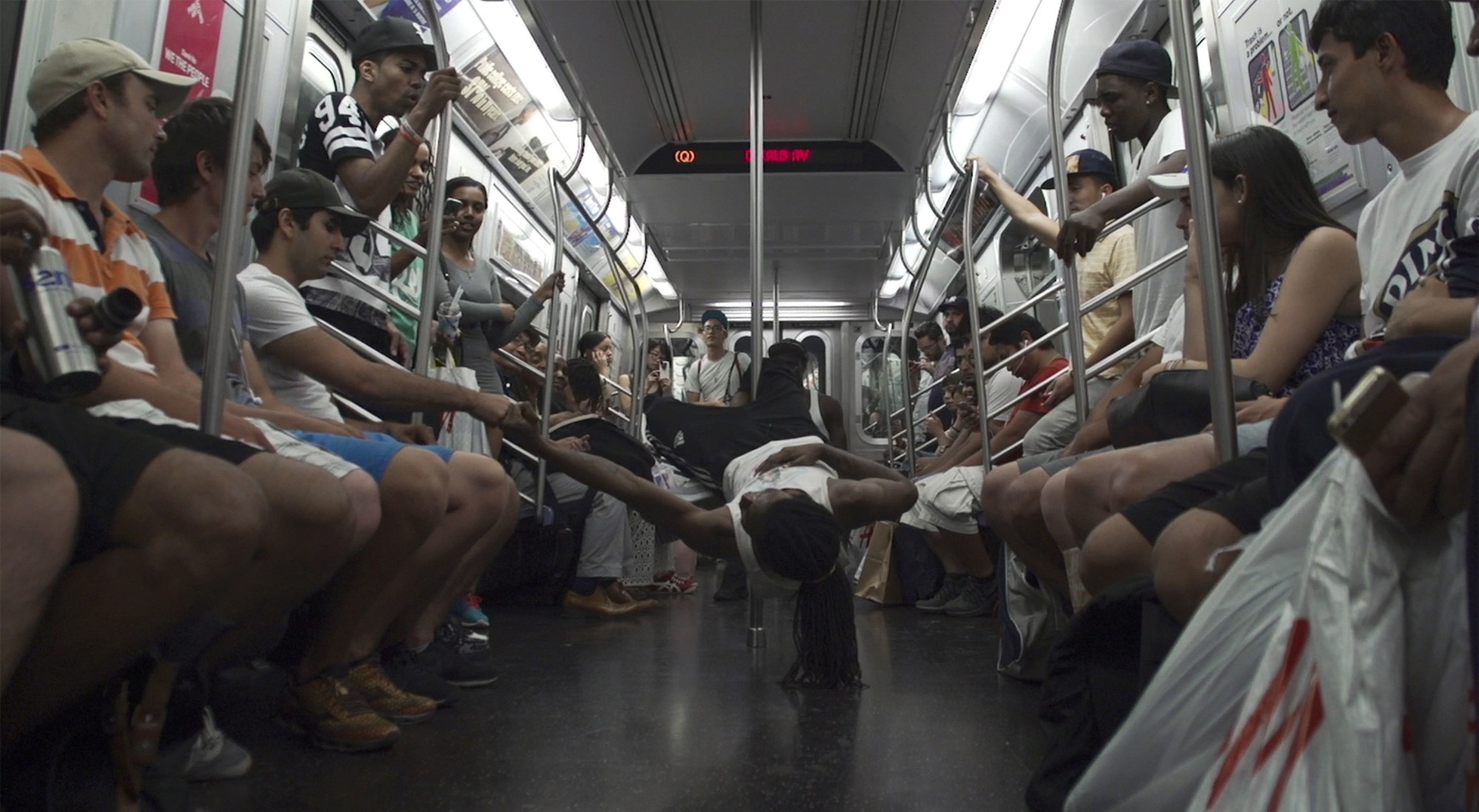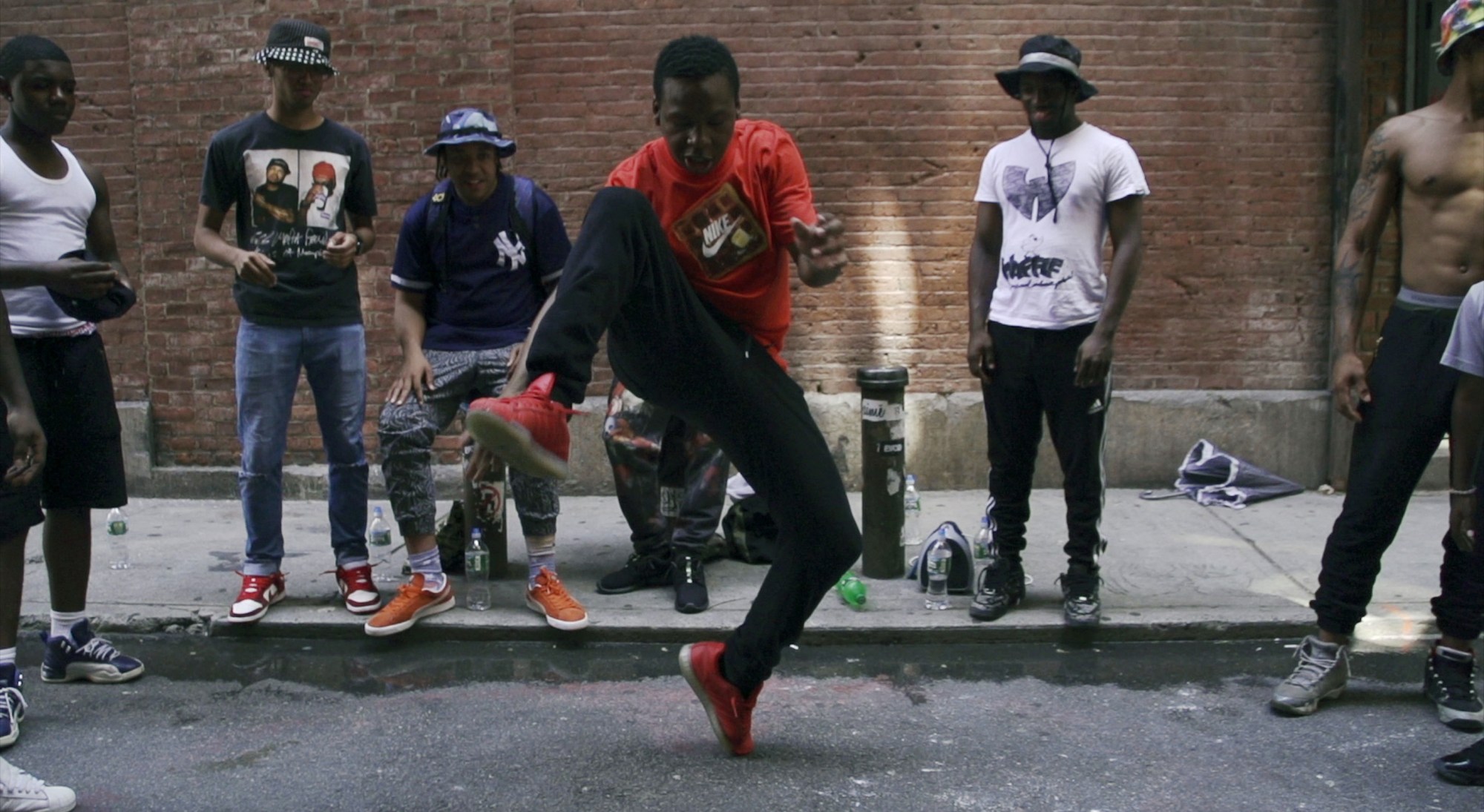The W.A.F.F.L.E crew have become part of a clean-up which really began in the 90s. New York Police Commissioner, Bill Bratton implemented the “Broken Windows Theory” as a method of reducing crime in the city. The theory suggests that neglected environments, with “quality of life crimes” such as open drug deals, graffiti or prostitutes, foster an atmosphere of unlawfulness and therefore act as precursors to more serious crimes. By stopping visible acts of disorder, like people performing on trains, the NYPD hope to prevent crimes like murder and rape.
However, the new law does not acknowledge the significance of this subculture within the cultural heritage of New York. Litefeet is a branch of street performance originating from the neighbourhoods of New York, Harlem and the Bronx. These iconic places once teemed with violence but what followed was unrivalled creativity, which has been passed down through generations. The birth of hip hop, break-dancing and many other disciplines of dance are the fruits of their struggles. Litefeet itself inherited a lot from the Harlem Shake, Chicken Noodle Soup, Aunt Jackie and Tone Wop which originated in these areas.
After filling me in on this fascinating context, Carthy answered a few questions on the piece itself:
Tell me more about Litefeet…
It’s all about expressing yourself, and as creatively as possible. Litefeeter’s often use objects within the dance, like a hat or shoes. The pole in the subway cars was a natural progression of that. I’ve seen videos of these guys just running forward and flipping over the crowd. The best subway dancers never really copy each other’s moves either. They talk about the importance of having mutual respect and developing the craft. Most of all I’m impressed that this movement has been completely developed by those in it, from the moves, to the music production and the platforms they bring it to. All they had on these subway cars was a pole, and they have mastered it.

How regular where these performances?
People online see one or two videos of these guys, what they don’t see is how frequent it became. It got to a stage where it was just crazy. At the main stations there’d be like five groups waiting to go on. Also negativity between performers and the public is not unheard of and not all groups were that impressive, so it’s really not that surprising that many New Yorkers got tired of the scene.
Describe the atmosphere of the performances you filmed…
I was really lucky with the camera quality because of how much it picks up. People really loved it! But they needed to have their minds changed. As soon as they heard show time they didn’t always react positively. Some people didn’t even look up. I think if you put anything in that environment people’s immediate reaction is often going to be “No, I don’t want that in my face.” But, the last carriage we did just erupted; there were cheers the whole way down.
So what are they doing now that they can’t dance on subway cars?
Many crews, like W.A.F.F.L.E, have moved on, but there are groups still doing it and they’re just getting better and better. Some other dancers I worked with now perform on the express train because there’s more time between stops. They’ll get on, check the carriage ahead and behind, wait until the train’s moving, start doing their show and finish two minutes before the train stops.
And who is that little kid!?
Nasir, or “Kid Break”! He’s five years old! He’s going to be one of the best dancers in the city. Obviously he gets attention because he’s little, but actually as a dancer he’s developing at a mad speed. He dances with the Litefeeter’s on the trains, and does a lot with the break-dancers in the city too. He also trains with some of the old school B Boy’ers, so he’s going to be incredibly well-rounded. His dad often had to take him aside and be like “You need to calm down,” because he gets so excited that he’ll do a two minute set when everyone else only gets 30 seconds. I’d actually like to start some sort of video archive with him, film something every time I come to the city to see how he progresses. If he’s involved with these break dancers you have no idea which way it could go for him.

Did you have any major reference points?
Bruce Davidson’s subway photograph series… you can smell and taste the subway of the 80s and I think looking at those photos really inspired me. He’d spend hours down there with his cameras, armed with a blade in case anything went wrong. It’s so good to see someone immerse themselves in something just so other people can see it in 20, 30 years time. I really want people to be able to watch this film one day and think “look at this crazy shit that went on which we can’t even see anymore.”
Which is your favourite track on the film?
I think it has to be Paper Trails by Darkside (Nicholas Jaar and Dave Harrington), the track in the final scene on the subway. It’s this incredible contrast, you have this aggressive dance style but I wanted to create a completely contrasting visual because I’m treating the topic differently. Also, lots of people are put off by the music the guys actually play on their sound-systems, and the dance becomes less appealing as a result.
Scott Carthy has already begun filming another area of the New York dance scene which will be released with FACT Magazine in 2015.
